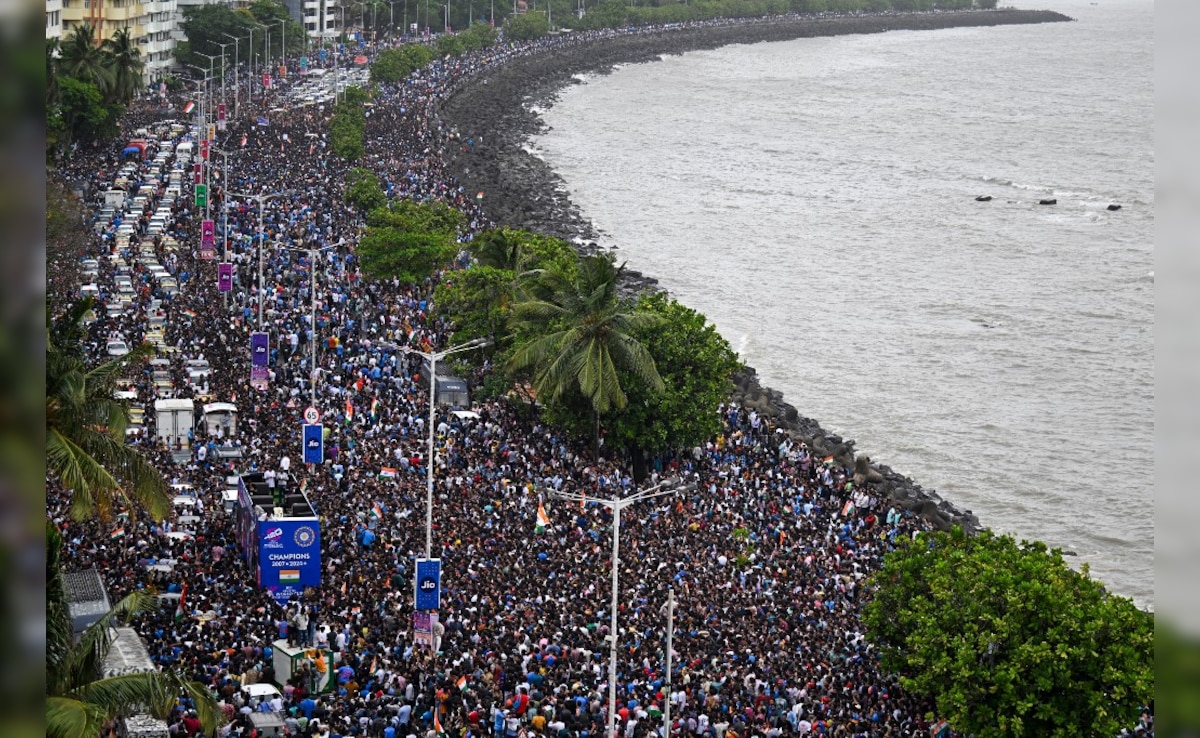
Stampedes are not new in India, especially at religious events, where huge crowds gather in tight spaces with shoddy infrastructure and almost no safety measures. The Hathras tragedy, where 121 lives were lost on July 2, seems to have taught us nothing. Just two days after that disaster, the Marine Drive in Mumbai saw about 3 lakh people jostling for space as they gathered to catch a glimpse of India’s T20 World Cup winners. Then, on July 7, another religious festival, the Jagannath Puri Yatra in Odisha, witnessed two people dying and several getting injured in a stampede-like situation.
An estimated 80% of stampedes in India, unfortunately, occur during religious events. Crowd management remains an afterthought in most cases. Overcrowding at railway stations, roads, metros, local trains, markets, malls, election rallies, tourist places, and marathons are other places – the list is endless – where stampede-like situations arise and are avoided nearly every day.
Lack of planning or coordination, poor arrangements by the organisers, and cutting corners on safety and security measures are some of the main causes of stampedes. The Indian cricket team’s victory parade at Marine Drive is a prime example. Fans were seen dancing over cars, vehicles and public property was damaged, and there were traffic jams due to the massive crowd. The parade left behind a trail of litter, lost footwear, and waste. There was news of two fans fainting and others experiencing breathing difficulties. The police were unable to manage the pandemonium.
In the Hathras stampede too, reports indicate that the crowd at the venue, numbering around 2.5 lakh, far exceeded the permitted limit of 80,000. The prayer meeting was held under a temporary tent erected on a muddy field.
All this should compel us to ask a few basic questions about why local authorities usually fail at handling overcrowding and accidents. “Crowd management is an art and a science. Every police academy and training institution gives the officers the basic rudiments of crowd management. Crowd behaviour, predicting when a crowd becomes a mob and mob has the propensity of becoming violent, is taught everywhere,” says Dr Vikram Singh, chancellor, Noida International University and former Director General of Police, Uttar Pradesh.
Rules In Place
In response to such recurrent situations, the National Disaster Management Authority (NDMA) recently released detailed instructions to arm state governments, local authorities, administrators and even event organisers with guidelines for effective crowd management. There is also a Standing Operating Procedure in place for managing crowds. “Be it managing pilgrims or devotees at the Kumbh Mela, Muharram procession or public meetings, the authorities determine the size of the crowd, volume, route, and whether there are any obstructions, any sensitive areas where there’s a past history of violence,” says Dr Singh.
The deadly crush at Hathras was triggered when Suraj Pal Singh, a.k.a ‘Bhole Baba’, exited the stage and made his way towards a vehicle. Devotees rushed out of the tent to touch his feet or the ground he walked on, resulting in a chaotic and deadly situation. Overcrowding and inadequate exit routes were the main causes.
Defining crowd psychology at public places in India, Dr Shivani Katara, a PhD in Social Medicine from Delhi School of Economics, says, “In India, population explosion has led to an increasing number of people visiting commercial as well as religious sites such as malls, temples, etc. Once the crowd density exceeds four to five persons per square metre, congestion builds up. If the crowd tries to move towards something they perceive as valuable (for instance, in the Hathras case), a stampede is triggered.”
Also, says Katara, a “panicked” crowd in motion releases energy akin to a running train, which is why people often die due to suffocation (asphyxia). “They feel physical pressure from all sides, which compresses their ribcages. Usually, venues seldom conduct a pre-registration checks or abide by rules for regulating the size of the crowd,” she adds.
New Age Solutions
Technology can help curb at least a few of these risks. For the upcoming Kumbh Mela in Prayagraj next year, the Indian Railways plans to use Artificial Intelligence to monitor and manage the crowd real-time. This is a welcome move.
“The technology that can be used to contain and control such crowds would be CCTVs, drones, plain-clothed security personnel, personal facial recognition software as also data analytics, AI-managed data of people with past crime records, and facial recognition software,” says Dr Singh.
But this is just mitigation. These efforts also need to be accompanied by infrastructure improvement, adequate medical and transport facilities, and efficient coordination.
Mass gatherings are inevitable in a country as populous as India. Authorities at all levels must be made fully aware of the guidelines, restrictions and advisories to prevent loss of lives.
(Bharti Mishra Nath is Contributing Editor, NDTV)
Disclaimer: These are the personal opinions of the author

